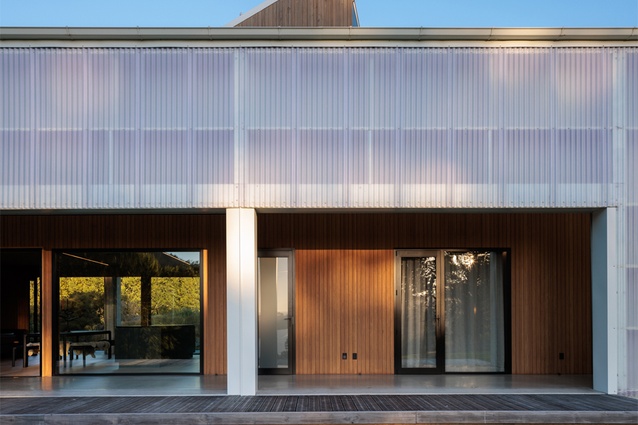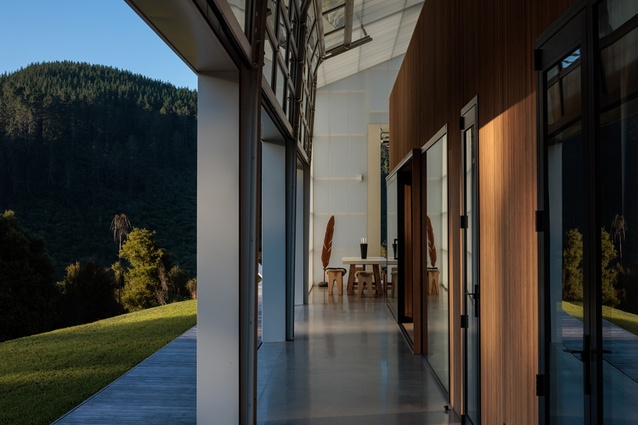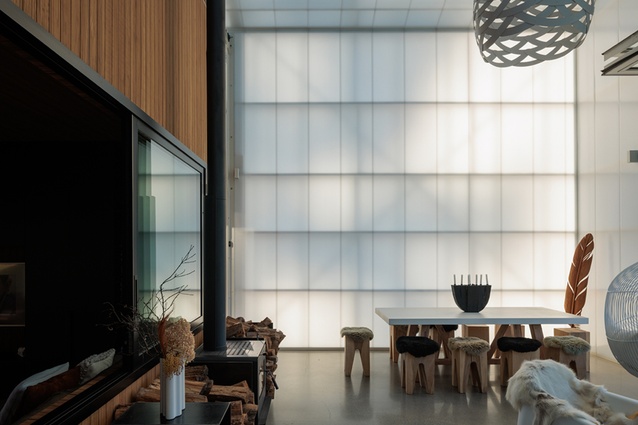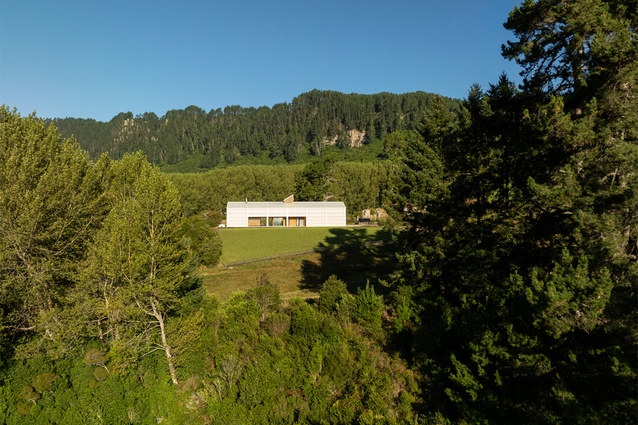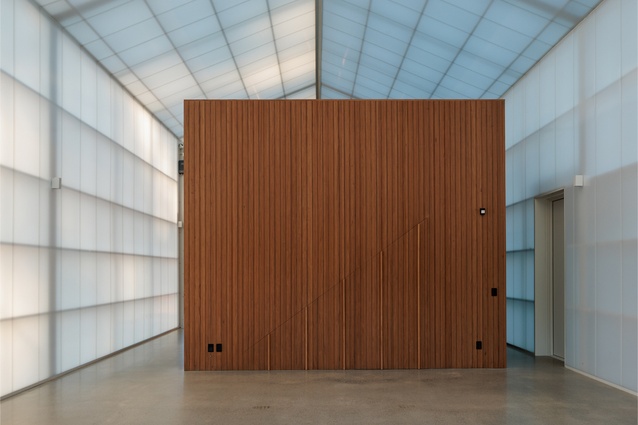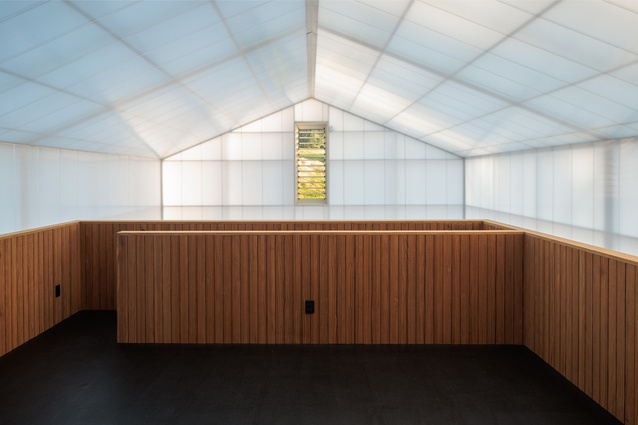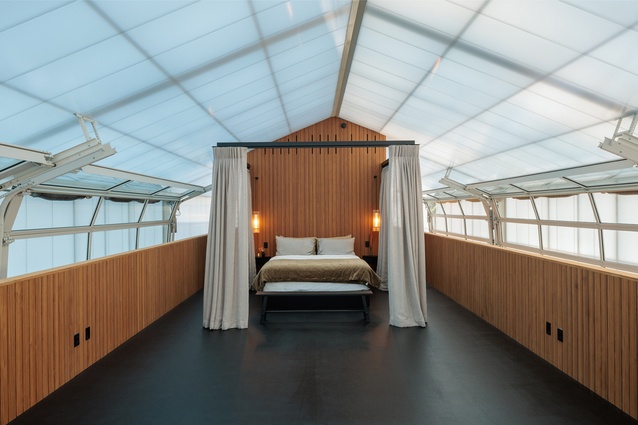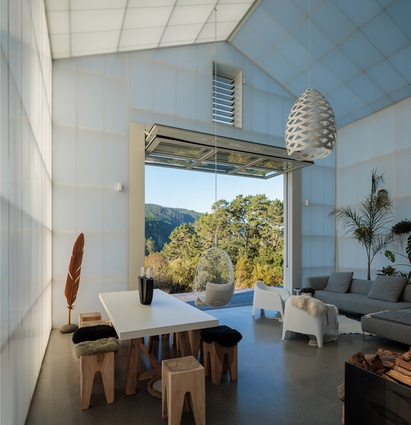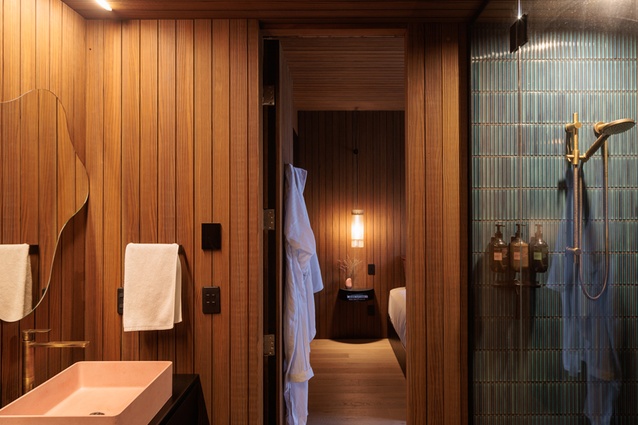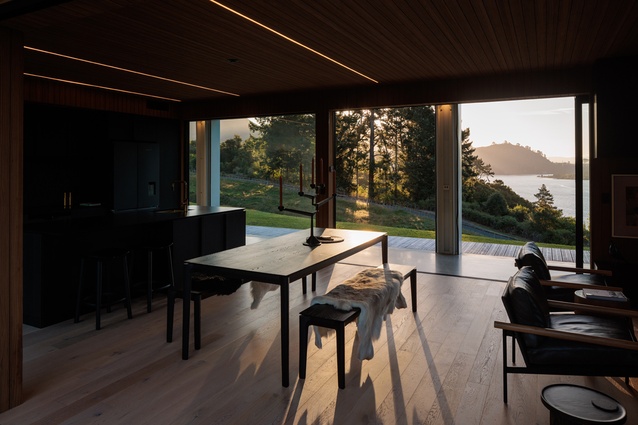Family camping holidays inform a unique design
This unconventional holiday home is situated on a rural station on the banks of Lake Whakamaru in South Waikato, offering 360-degree views over the central North Island landscape. Perhaps almost as unconventional as its design is its name — The Chodge.
Having bought the property more than a decade before building, designer Darryl Church and his family had regularly camped on the site and had developed a strong desire for the home to feel very much at one with its location. “We were keen to explore ideas that would create a new concept for outdoor living,” says Church, “to help re-imagine the traditional, casual Kiwi camping experience.”
The house had to feel cosy enough for just two occupants but also be capable of housing up to ten. Church describes the resulting design as “an exploration of the interstitial space between inside and outside, how you live when on holiday, the relationship with landscape and connection to a rural vernacular.”
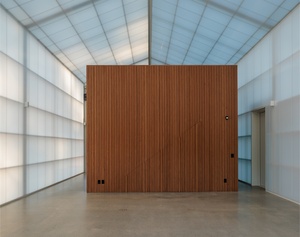
Essentially, it’s a house within a house. Living ‘in the threshold’ drove the idea of creating a space outside the inside but still inside the outside, explains Church, while the ubiquitous woolshed vernacular informed the exterior form. A translucent skin on the outer structure contributes to the control of heat gain and heat loss. Inside the outer shell, an extruded wooden container designed to Passive Haus principles houses the living functions and then the interstitial space enables the family to inhabit it comfortably across all the seasons. Additional sleeping spaces on the mezzanine resonate with the past camping activities on the site, staying in tune with natural daylight hours.
The ‘inside of the inside’ is dark, textural and warm, a wooded retreat dressed in animal hides and a place to cocoon during winter. Detailed to feel like a luxe lodge, its bathrooms feature granite, timber and mosaic tiles and the built-in joinery is black oak, to contrast with the Abodo textured walls and ceilings and the American oak interior flooring. A built-in corner sofa, co-designed by Church and Forma, maximises the seating area. The outer space is light-emitting, with large, glazed openings that subtly dissolve the threshold to the outside. The mezzanine and its sleeping spaces are framed with custom steel and can be enclosed with sheer curtains for privacy.
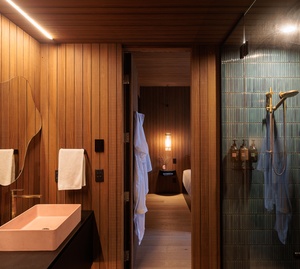
The internal thermally modified timbers were chosen for their environmental credentials but also for the material’s endurance to age, “to take the knocks and wear well,” Church points out. Other materials were chosen for similar credentials – their ability to age and patina – such as oak cabinetry, granite benchtops, rubber and polished flooring, GRC basins, brass tapware and waxed steel. “We optimised floor space by ‘designing in’ all the furniture,” says Church. “This included custom bed bases with drawers, built-in wardrobes, pull-out cupboards under the stairs, and storage under the built-in custom seating.” Church and colleague James West even designed custom 3D-printed curved internal corner moulds for the tiles in the showers to eliminate any 90-degree crevices.
The result of this openness to explore new concepts is a unique, highly creative and sustainable project, with an endearing name, coined by the team at Church’s practice, DCA Architects of Transformation. Having originally (jokingly) described the house as a ‘lodge’, they soon abridged the ‘Church Lodge’ to The Chodge.

